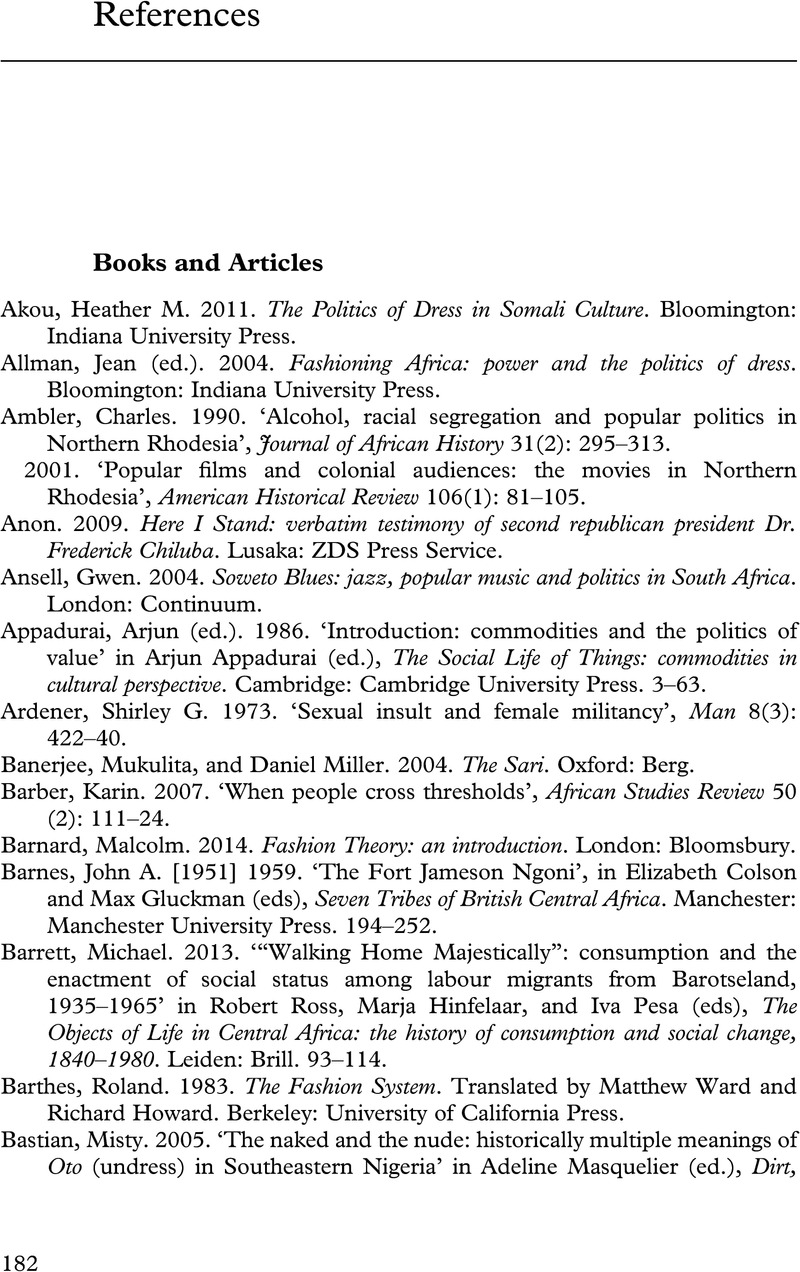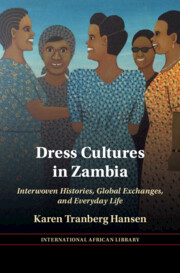Book contents
References
Published online by Cambridge University Press: 20 April 2023
Summary

- Type
- Chapter
- Information
- Dress Cultures in ZambiaInterwoven Histories, Global Exchanges, and Everyday Life, pp. 182 - 199Publisher: Cambridge University PressPrint publication year: 2023



